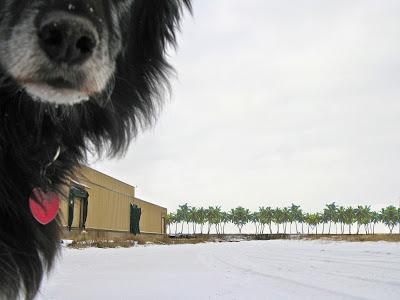
What's wrong with this picture? (Laramie, Wyoming; click on image to view).
Like most plants, trees are powered by the sun. Leaves are their solar collectors, and inside them are little powerhouses and factories (chloroplasts) where sunshine, carbon dioxide and nutrients are made into carbohydrates for life and growth. Obviously leaves are hugely important to a tree, but they aren’t always a good thing. In fact where winters are cold, they're a liability. They could freeze, or trap snow and break branches. So what to do?Deciduous trees toss their leaves each fall but then must produce a new set in the spring. This seems wasteful and costly.
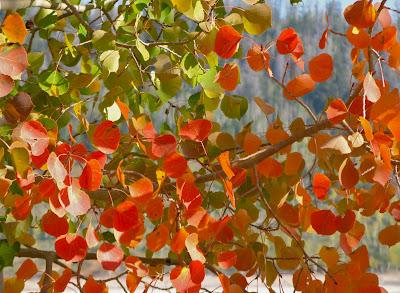
Every fall, quaking aspen (Populus tremuloides) kills it leaves by starving them, a pretty but brutal process.
Evergreens keep their leaves all winter. They’re ready to go first thing in the spring, but isn’t this a bit risky where winters are long, cold and snowy?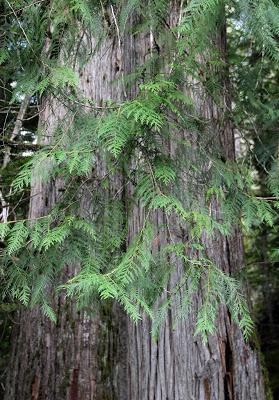
Western red cedar, an evergreen conifer, keeps its beautiful needles year round.
What would you do if you were a tree? Here are a couple of tools to help you decide, produced by botanists in collaboration with Mother Nature. First, a table of terms and definitions:
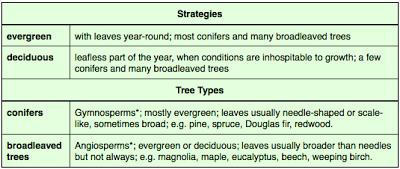
*Gymnosperms and angiosperms are two evolutionary branches within seed-producing plants (spermatophyes).
Next, a map showing forest types of the world (source). Trees can help us pick a strategy because there’s a pattern to their distribution ... a gross over-simplification of course, but close enough to reality to let us ponder why different types of trees grow where they do (“needleleaf” is equivalent to “conifer”).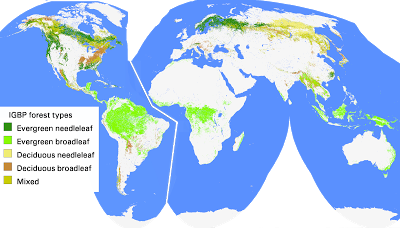
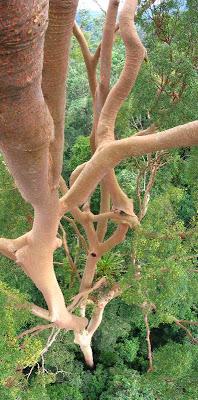
In a sense, the ideal place to live is where it never freezes and there’s always adequate moisture, for example the tropics. In these places a tree can grow year-round, so it’s not surprising that most tropical trees are evergreen. Furthermore, they’re broadleaved. It’s worth investing in large thin leaves that maximize sunlight and carbon dioxide uptake. Highly-productive leaves mean faster growth to compete for sunshine. Evergreen leaves do die and fall off but not all at once. There’s always plenty to feed the tree.
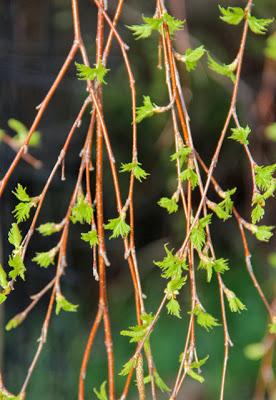
Of course evergreen broad leaves would be a poor choice where the climate is seasonal. They aren’t hardy enough. Deciduous is a better strategy -- drought-deciduous in deserts, cold-deciduous where winters are harsh.
The cold-deciduous weeping birch (Betula pendula, right) produces a new set of thin highly-productive leaves for the growing season, tosses them in the fall, then goes dormant and rests over the winter.
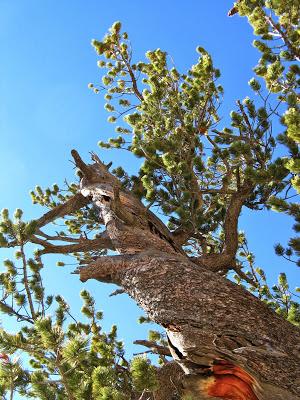
Limber pine (Pinus flexilis) in the Laramie Mountains, Wyoming.
Where growing seasons even shorter and winters are long and cold, evergreens again dominate but these are conifers, with needles or scales instead of broad leaves. They’re smaller, hardier, more frost resistant, but not nearly as productive. Still, being evergreen they’re a better choice overall. There’s no need to grow new leaves every spring. A tree can get on with the business of photosynthesis right away.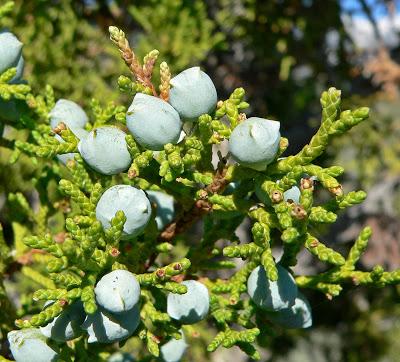
Juniper scales and berry-like seed cones (source).
Then at the very northern limits of forests we find ... a big surprise! Mother Nature has thrown a twist into our nice sensible pattern of forests types. Often it’s deciduous trees that dominate the northernmost forests (note yellow and orange patches in the far north in map above). In Asia, these are mainly deciduous conifers (larches). In North America, they’re more often broadleaved species -- poplars, willows and birches.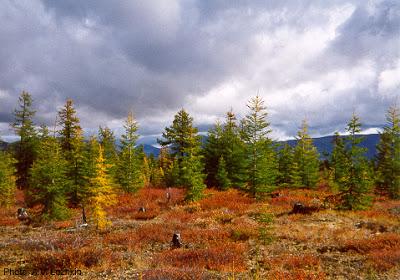
Dahurian Larch, Larix gmelinii, makes up extensive forests in eastern Siberia (source).
What kinds of adaptations allow trees to live where growing seasons are so short, and winters so frigid? Some can export water from cells into inter-cellular spaces, where it then freezes. Once in this state, tissues can survive temperatures at least as low as -196º C! (Thomas 2000).So evergreen or deciduous, broad leaves or needles ... which would you choose? I would be an evergreen conifer so I wouldn’t have to go do the intensive-growth-thing. Summers are too short ... I want as much leisure time as possible!
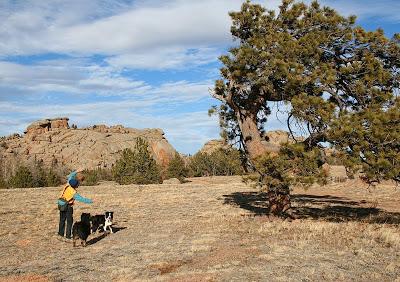
Tree impersonation, a popular plant-geek pastime.
This is the final post in a short series about autumn tree strategies.
Sources (in addition to links in post)
Havranek, WM and Tranquillini, W. 1995. Physiological processes during winter dormancy. in Smith, WK and Hinckley, TM, eds. Ecophysiology of coniferous forests. Academic Press.
Thomas, P. 2000. Trees: their natural history. Cambridge University Press.
